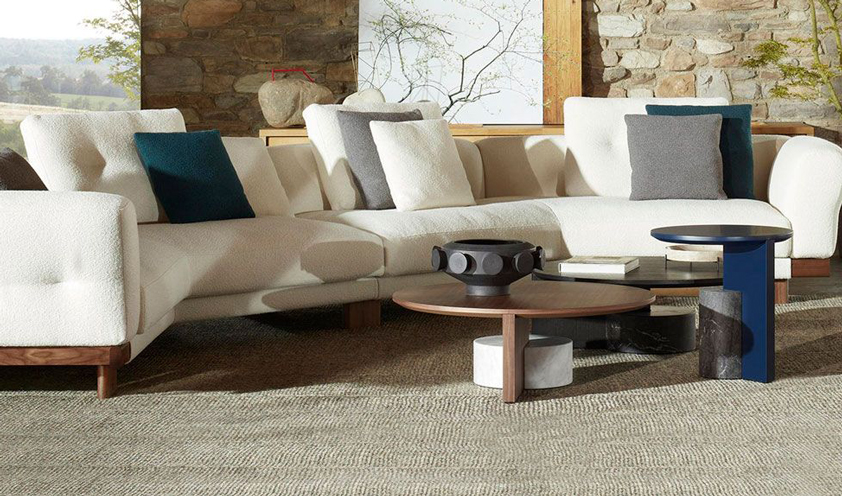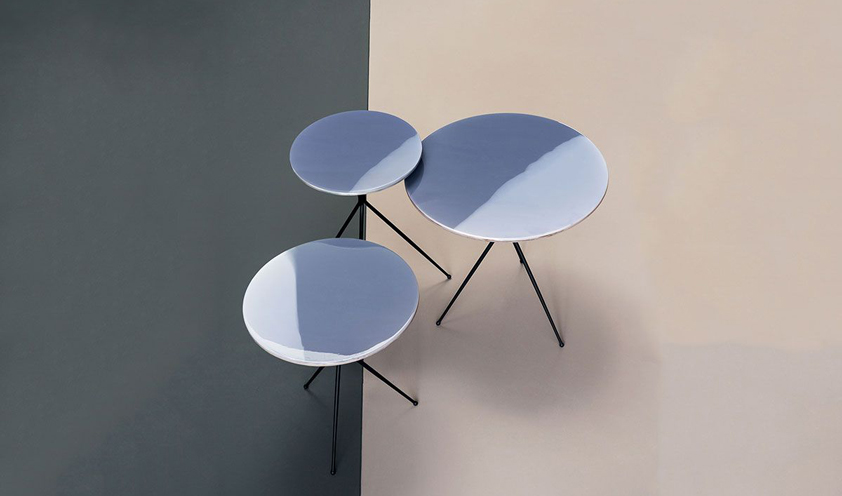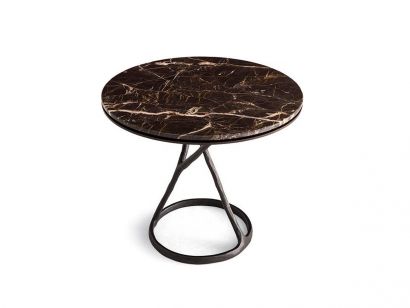

7 small coffee tables to be placed next to the sofa
In a classic living room layout, we have a low - but rather large - coffee table in the center, between the sofa and armchairs. However, this option is not the only one, in fact we can also choose two or more small tables, belonging to the same collection, to be arranged in a dynamic and perhaps even more functional design, compared to the single central element. It is an interesting solution because it is flexible: smaller tables are easier to move. A few examples? We can place two elements in the center and one on the side of the sofa, or one in the center and two on the sides of the sofa. We can place them asymmetrically and so on, accommodating our needs of the moment and creating unexpected and classy combinations. Also because, in each collection, the models have the same style declined in different proportions, colors and finishes, to be combined freely. Here are some examples.
by for
On the cover, the pair of Ilda coffee tables, designed by Jean-Marie Massaud for Poliform. The structure, whose design evokes almost giacomettian forms, is in bronze and is produced in an artistic foundry and then finished by hand. The top is in marble, available in various types and colors. A perfect fusion of craftsmanship, design and sculpture.
by
for

For those looking for a series of elements to combine, Louisa is the winning solution. The collection is divided into three variants that differ in shape, color and wood essence. With a solid leitmotif, consisting of the apparently regular but in reality extremely refined shape, of a load-bearing element placed in an asymmetrical position with respect to the top which is lowered inside.
by
for
![]()
The Bell Side Table by Sebastian Herkner for Classicon challenges our classic idea of a glass coffee table: if we are used to find the top in this material, in the Bell Side it is the base that is made of hand-blown glass. The top, on the other hand, is in metal and in this version, it has an attractive brass edge. The result is a delight for the eyes.
by
for

Even the Sengu collection by Patricia Urquiola for Cassina is, in its own way, "subversive": marble is not used for the top but, with a high thickness, for the base on which a thin central body and the top are installed, both in oak veneer, available in black, canaletto walnut or lacquered in various colors.
by
for

Essential and sculptural, the Cone coffee tables designed by Andrea Parisio for Meridiani have a conical base in Ductal® cement, composed of high quality mineral elements and the top available in round or square shape, and glossy or matt finish.
by
for

The stylistic brand of GamFratesi is immediately noticeable in the structure of this table, characterized by a crossing of fine lines. Decorative but minimal, it is perfect in the variant with a brass base, for a classic style, but with a contemporary twist.
Liquid by
for

The Liquid coffee tables by Draga & Aurel for Baxter are real works of art. In all of the models, in fact, the base is in matt black painted metal while the top is made up of a hand-decorated beveled MDF surface, with resin applied by Aurel freely. It is the perfect mix of design and art, to have a unique piece at home, particularly attractive in the lilac color.







By creating an account with our store, you will be able to move through the checkout process faster, view and track your orders in your account and more.
Login with
or else
Be inspired by the best international design.
By creating an account with our store, you will be able to move through the checkout process faster, view and track your orders in your account and more!
Subscribe to our newsletter and you will receive a 10% discount coupon to use on your first order. You will also be informed about design novelties, promotions and the most interesting news about the design world. A lot of surprises, special discounts and bonus are expecting you!